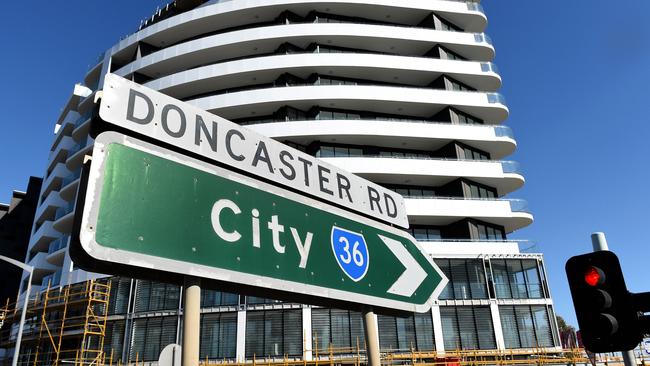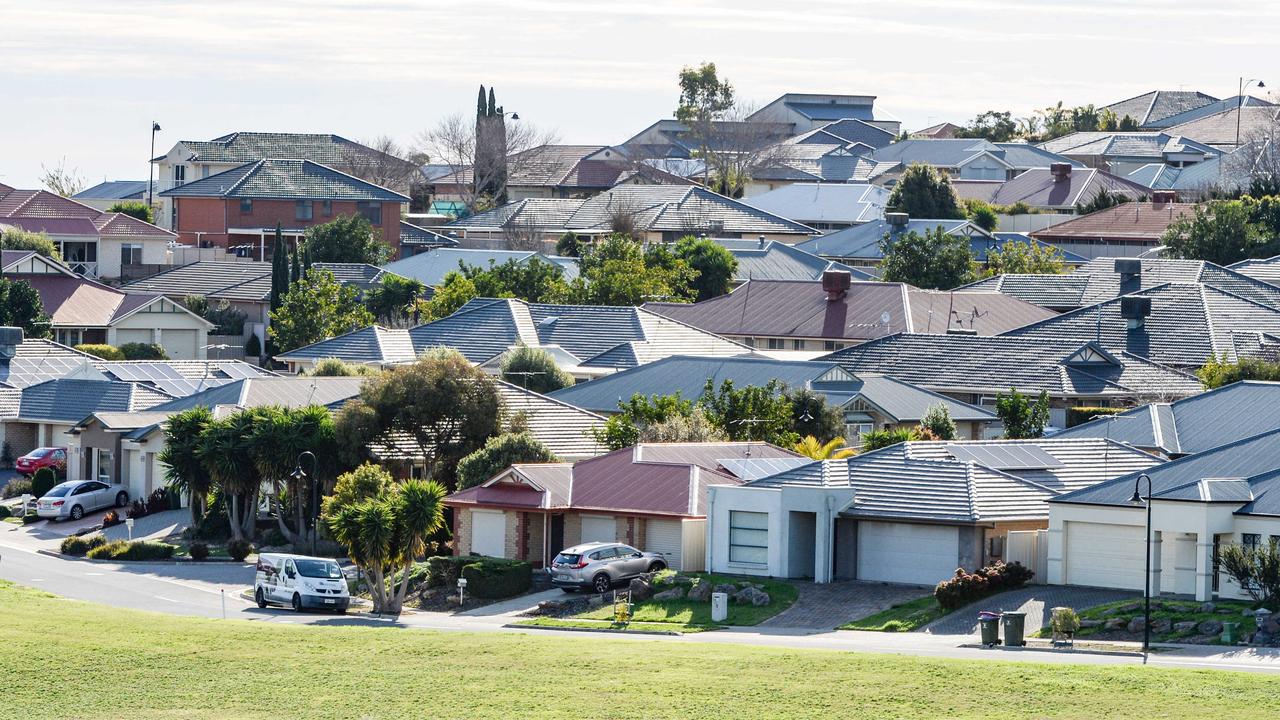Boom to bust: how many is too many apartments for our big cities?
CONSTRUCTION is booming and unit approvals are at record highs, but are there enough buyers for all these glossy new apartments?

APARTMENT block development approvals are now at record highs and as a result, construction is booming in many metropolitan areas. But are there enough buyers for all these glossy new units?
CoreLogic research analysts Tim Lawless and Cameron Kusher have released a New Settlement Risk Report which takes a look at the number of units due to settle over the next six, 12, 18 and 24 months.
The report identified that across the combined capital cities, there are 92,102 new units set for completion over the next 12 months with that figure expected to rise to a whopping 231,129 during the next two years.
Unsurprisingly, the most construction action across our capitals is happening in our two biggest cities, Sydney and Melbourne.
But when comparing the volume of units that are due to settle over the next year, or two years, to the average number of annual unit sales over the past five years, Mr Kusher said there was “a big disconnect”, particularly in the four largest capital cities.
“The large volume of new stock, coupled with an ever-growing supply of existing stock means that historic high levels of unit settlements are due to occur over the next two years in most cities. In fact, even a recurrence of the peak year for sales in Melbourne and Brisbane over the next two years wouldn’t represent enough demand to cater for all of the new units set to settle over the coming 24 months,” he said.
Greville Pabst, executive chairman and co-founder of WBP Property Group told news.com.au that the data was concerning.
“The figures paint an alarming picture for the new apartment market in the coming 12 to 24 months, particularly in Sydney, Melbourne and Brisbane where unit settlements are virtually double, or more, the average number of sales seen over the last five years. Put simply, this means there will be a significant oversupply of new apartments, not to mention a growing volume of existing high-density apartments,” he said.
However, he said the volume of new apartments wasn’t the only problem.
“The concentration of new apartments in terms of geographical distribution is also an issue for the long-term performance of these properties, with current projected volumes expected to outweigh demand for the next several years, with obvious implications for stock absorption.
Couple this with increasing pressure from banks on both local and international investors, who represent a large proportion of off-the-plan buyers, and settlement risk is not only possible, but increasingly likely in many capital city markets,” he said.
After crunching the numbers on which regions will have the most unit completions in the next two years, the CoreLogic report showed that Sydney and Melbourne stood out with eight and 12 of the regions featuring in a list of 25 hot spots.
In Queensland, there are three regions on the list from Brisbane and one from the Gold Coast, while one Perth region also made the cut.
For Melbourne, Brisbane and Perth, most of the stock due to settle sits within a 10km radius of the city, however Sydney’s new unit supply is more geographically diverse. The harbour city has a large number of new units in inner city areas, but there are also several apartment blocks on the go in outer suburban areas like Parramatta, Strathfield, Auburn and Kogarah-Rockdale.
“In some respects this spreads some of the risk around the city rather than other cities where new supply is much more centralised,” Mr Kusher said.
WHAT COULD HAPPEN BEFORE SETTLEMENT?
“The concern is a lot of buyers had contacts on these units from a number of years ago when these projects started. Obviously bank lending practices have changed now. So, some of these people who have signed contracts for these apartments may not be able to settle on them,” Mr Kusher said.
“Borrowers could be pulling out and saying that they’re not in a position to settle because they can’t borrow as much as they thought they were going to be able to, they haven’t got the funds because no one will lend them the money,” Mr Kusher said.
“Lenders could be saying ‘Well three years ago we could lend you 95 per cent, but now we can only lend you 85 per cent,” he said.
But Mr Kusher said one upside could be for tenants with cheaper rent on the horizon if the apartment glut continues.
“It’s obviously going to have an impact on the rental market because a lot of the units have sold to investors,” he said.
“But for purchasers, I guess the challenge is going to be that a lot of the stock is targeted at foreign buyers, and often they’re happy to buy quite small units in big blocks. Then the question will become ‘Do first home buyers actually want to buy this type of property?’ if a proportion of them do come up for sale at lower prices?”
“Certainly some people will jump in, but for others they might not be palatable for an owner occupier,” he said.
WHAT ARE THE POTENTIAL CONCERNS?
• Corelogic’s New Settlement Risk Report outlines that in many regions, capital growth for units has been substantially lower than that for houses so many off-the-plan unit buyers would have expected a level of capital growth between contract and settlement and that may not have happened.
• Now that mortgage lenders have tightened their lending criteria, particularly for investors, some buyers who have already committed to off-the-plan units may not be able to borrow as much as they could at the time of signing the contract.
• Recent history shows us that apartments are much more likely to be owned by investors. So not only have lenders recently tightened mortgage criteria for potential landlords, they have also increased mortgage rates for investors therefore putting off a whole category of potential buyers.
• Many of these new units are coming up for settlement in similar locations and so will directly compete with existing apartment stock. With so much supply coming online at once there is an increasing industry-wide concern as to whether valuations on the day of settlement will actually meet the contract price of these units.
• To make matters worse for new unit prices, several lenders have announced they will no longer be lending to overseas home buyers which may result in a larger number of contracts not progressing through to settlement, considering a larger proportion of off the plan unit saleshave been to overseas buyers.
NUMBER OF EXPECTED UNIT SETTLEMENTS
Sydney
There were 34,216 apartment sales last year, and an average of 43,442 unit sales over the past five years. But in the next 12 months 34,300 total new units are due to settle and 81,696 in the next 24 months.
Melbourne
There were 28,506 apartment sales last year, and an average of 30,781 unit sales over the past five years. But in the next 12 months 29,541 total new units are due to settle and 80,503 in the next 24 months.
Brisbane
There were 15,880 apartment sales last year, and an average of 14,932 unit sales over the past five years. But in the next 12 months 16,652 total new units are due to settle and 44,511 in the next 24 months.
Combined capitals
There were 96,195 apartment sales last year, and an average of 108,144 unit sales over the past five years. But in the next 12 months 92,102 total new units are due to settle and 231,129 in the next 24 months.




